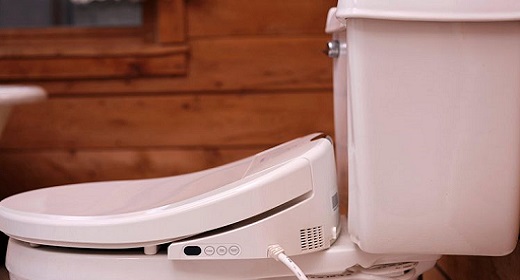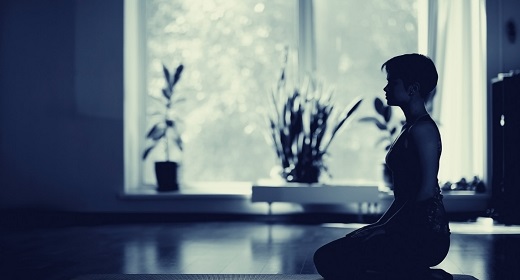by Katherine J. Wu: Amid toilet paper shortages, many Americans are making the switch—but does all the fuss about bidets really hold water?
When I was a kid, I didn’t get in trouble for much. But one old habit of mine used to drive my dad up the wall: I really, really overdid it with the toilet paper.
It didn’t matter how thick or plush the product was. A few measly squares of dry, processed tree pulp were simply never enough to make me feel clean. So I tried to compensate for quality with quantity, wiping my bum with wad after wad of TP—something my strict father considered abominably wasteful.
To be fair, my dad grew up in rural Taiwan in the 1940s, when most defecation was done in pits, not toilets, and one’s cleanliness depended heavily on the selection of leaves and sticks within arm’s reach. Even after he immigrated to the United States in his 20s, the rural frugality stuck. Toilet paper was, and still is, a luxury—a fact that’s been heavily underscored by recent spates of panicked TP hoarding, spurred by the ongoing COVID-19 pandemic.
I couldn’t have known it at the time, but a single device might have been enough to solve both my father’s and my washroom woes—the same one that’s now flying off digital shelves nationwide: the bidet. These squirty little doodads, which cleanse the nether regions with a gentle jet of water, are touted by many as sanitizing superheroes, with powers vastly superior to those of toilet paper. In Japan, home of a popular electronic toilet called the Toto Washlet, bidets appear in about 80 percent of households; since 1975, Italian law has mandated their presence in every home. Historically slow to take in American markets, the devices may now be gaining some ground: Sales of bidet attachments like Tushy have soared since the start of the pandemic. Thanks to the new coronavirus, 2020 might just be the United States’ Year of the Bidet.
But pleasing as the devices may be to some, they’re not for everyone—and a lot of what ends up touching any given tush comes down to personal preference. What’s more, scientific studies on bidets are somewhat scarce; even clinicians who recommend their use do so mostly on the basis of anecdotal data. “This isn’t evidence-based medicine, that’s for sure,” says Madhulika Varma, chief of colorectal surgery at the University of California, San Francisco.
A brief history of the bidet
Though today’s bidets are often billed as tech-savvy trappings, the earliest iterations of the devices actually predate the appearance of modern, rolled-up toilet paper (an idea patented by Seth Wheeler of Albany, New York, in 1891), with roots in 17th-century or early 18th-century France.
Accordingly, the first bidet was agonizingly simple—little more than a souped up, sprayless wash basin over which one squatted as if straddling a horse (hence the name bidet, an homage to a small, stocky breed of horse), to rinse off their dirtied derrières. After gaining traction among the rich, the indulgent accessory trickled down to the working class, surviving several redesigns and the switch to indoor plumbing, which morphed them into miniature sinks. By World War II, bidets had spilled across international borders, finding their way into homes across swaths of Europe, the Middle East, Asia and South America, where they sat alongside toilets like faucet-fillable sidecars. As models advanced further, some acquired nozzles that could apply a light spritz of water to the nether regions.

Through it all, the United States remained a staunchly unwetted island of desert-dry bums. Part of the issue was space. Standalone bidets were seen as an unwieldy and unwelcome addition to already-cramped American bathrooms. Eventually, technological advancements allowed bidets to hybridize with toilets, in some cases collapsing the two into a single “smart” commode, while other models retrofitted standard toilets with bidet-capable seats or attachments. But still, the United States’ reluctance to adopt the splashy gadgets endured.
Rampant stigmatization of bidets didn’t help. Many early 20th-century Americans may have viewed bidets as symbols of French indecency, linking them to taboo topics like menstruation and prostitution, Maria Teresa Hart wrote in the Atlantic in 2018. That association may have been partly born out of the devices’ presence in brothels, where women may have deployed them as an (ineffective) form of birth control. Though these stereotypes have largely faded in the decades since, the cultural inertia clung to stateside commodes.
What’s best for our butts
Bidets might seem bizarre—but in many ways, they’re right in line with hygienic practices already deeply ingrained in our society.
“The idea of cleaning yourself with water is, intuitively, more logical,” says Cindy Kin, a colorectal surgeon at Stanford University Medical Center. Water, after all, is the standard-issue treatment for doing away with bodily grime under most other circumstances.
Byron Vaughn, a gastroenterologist at the University of Minnesota Medical School, puts it more bluntly. As a friend once told him, “If you pick up a piece of [poop] with your hands, you wouldn’t just wipe it off—you’d wash it.”
But while the wet-trumps-dry argument makes logical sense, no one has yet done a scientific study to back up the idea that bidets are hygienically better than toilet paper.
Then again, “It kind of doesn’t matter,” Kin says. “If you don’t get every bit of bacteria, or a microscopic amount of stool, off your skin, it’s fine. Nothing bad will happen.” Bidets or no, most of our not-completely-immaculate butts are doing just fine, and have been for many millennia.

Still, bidets can really come in handy for those with sensitive undersides, says Susan Wong, a nurse and colorectal disorders specialist at the University of California, San Francisco. People with Crohn’s disease or ulcerative colitis, for instance, tend to have more frequent or painful bowel movements, and may find that a cooling jet of water brings them some relief—or at least spares them from the constant chafe of dry toilet paper. Bidet users can then dry off by simply dabbing the area with a towel, or even a carefully aimed blow dryer on a low-temperature setting. “It’s a great way to avoid irritation,” Wong says. One small study even suggests that bidets may even prompt some muscle relaxation, though most people seeking that sort of comfort might be better off opting for a sitz bath or a long soak in a tub of warm water.
Bidets could also be a boon for people with physical disabilities, muscle weakness or other conditions that hinder their ability to clean off with toilet paper alone, Vaughn says. One study suggests the devices improved the “toileting experience” for a group of nursing home residents.
Then there’s the unrepentant super-wipers, a la miniature me. Patients who “wipe obsessively” with toilet paper because they’re chasing an ever-elusive sense of clean may be at risk of giving themselves pruritus ani—fancy clinical speak for itchy butthole, Kin says. “Once you get into that cycle of skin irritation, it’s hard to get out of it.” Switching over to a bidet might bring these people’s bums some much-needed relief.
Beyond that, though, little evidence exists that bidets bring about health benefits on their own. Hemorrhoids, fistulas, fissures and cancer—none of these conditions can trace their origins to the flecks of germs or poop on our bums, Kin says. In this realm, there’s “certainly no data to suggest bidets have benefits over toilet paper.”
Varma also points out that dropping hundreds or even thousands of dollars on a fancy new bathroom appliance isn’t necessary to introduce water into this particular bathroom routine: Something similar can be accomplished with a drugstore peri bottle, or even a water bottle with a pop-up top. Both of these options are also transportable.
Many patients can even make do with what they’ve already got at home, including tubs, sitz baths or even handheld shower attachments, says Marjun Duldulao, a colorectal surgeon at the Keck School of Medicine of the University of Southern California. “There’s really no advantage to using a bidet compared to these other techniques.”

Bidets also aren’t perfect—and wielded improperly, they can cause their own woes. Several models come equipped with pressure and temperature settings that could cause serious damage. Over the years, a smattering of bidet-related injuries, from burns to rectal prolapse and anal fissures, have surfaced, often linked to overuse. Even pruritis ani can (re)appear when the anus is too frequently washed. “You just need sensible cleaning and hygiene,” Duldulao says. “You don’t need a power-washing.”
And, just like any other appliance, bidets must be kept clean—especially considering the bits of anatomy they most often contact. A handful of studies have found bacteria lurking on the nozzles of electronic toilets, particularly those in public spaces. Under extreme circumstances, bidet use could even perturb the community of beneficial microbes found in the vagina, though studies haven’t consistently born this out.
“There are some very good products out there,” Duldulao says. “But a tool is a tool. It’s only as good as the person who’s using it.”
Making a splash
Toilet paper will always have one thing going for it: convenience. “There’s a reason we all use it,” Varma says. “It can be done anywhere. It’s easy, it’s simple.”
Part of the tradeoff for this, of course, is quite a bit of waste. The product of a laborious process that involves the pulping of millions of trees and billions of gallons of water, toilet paper isn’t exactly environmentally friendly, says Wong. It can also clog pipes (though not as badly as so-called “flushable” wipes), creating headaches for homeowners. These issues wouldn’t totally evaporate with a switch to bidets—most people would still want something to dab themselves dry—but washing in lieu of at least some wiping could make a difference.
And yet, the United States stands firm on toilet paper. Kin estimates that less than 10 percent of her patients use bidets; those numbers might budge slightly given current pandemic purchasing habits, but probably not by much.
“I ask my patients, can you consider this electronic toilet seat?” Wong says. “They all turn their noses up to it.”
People just aren’t fans of change—and sometimes, that’s just kind of a bummer.



















































